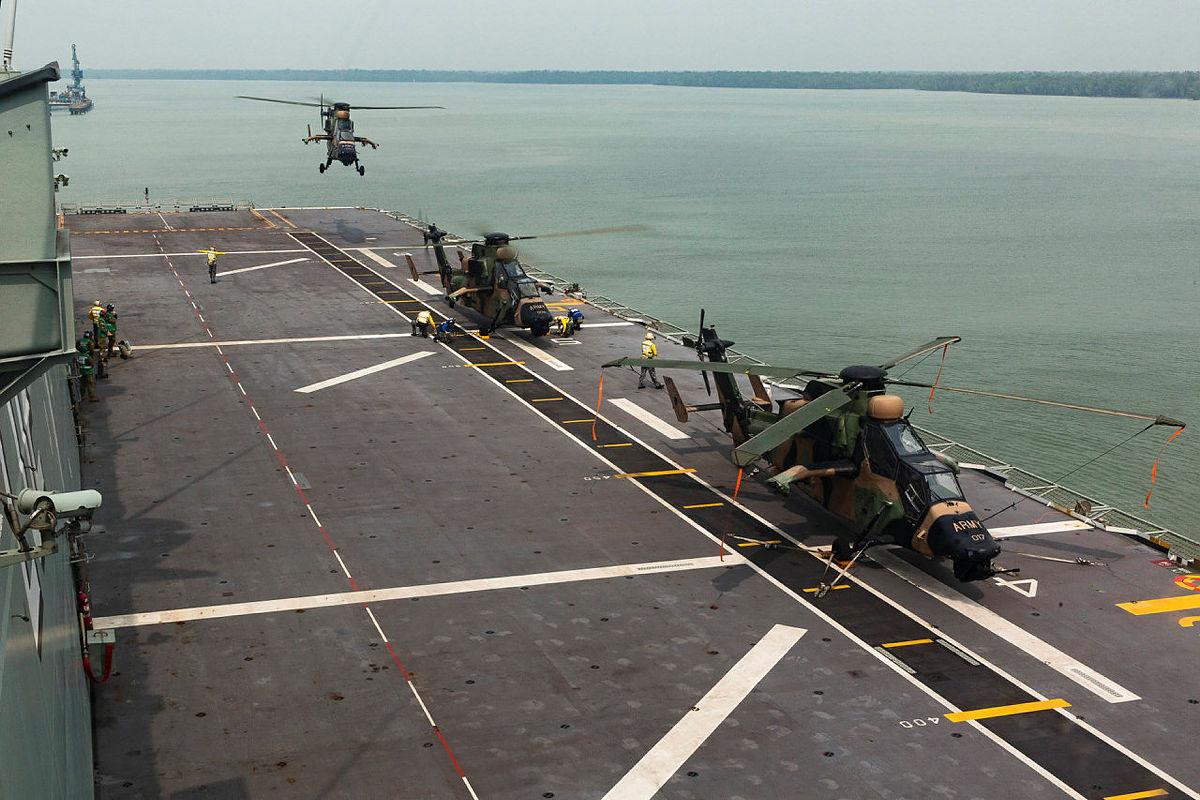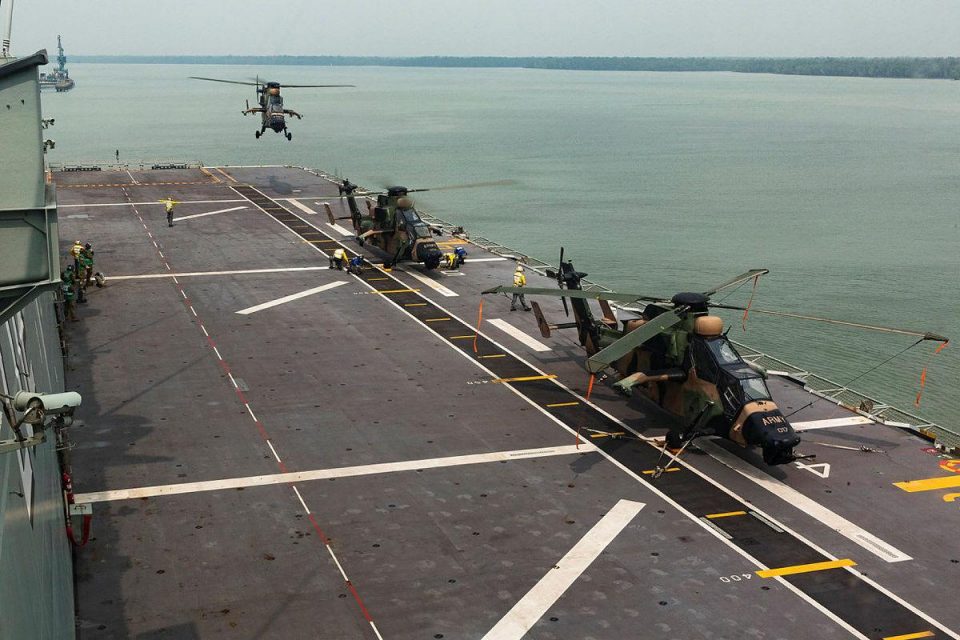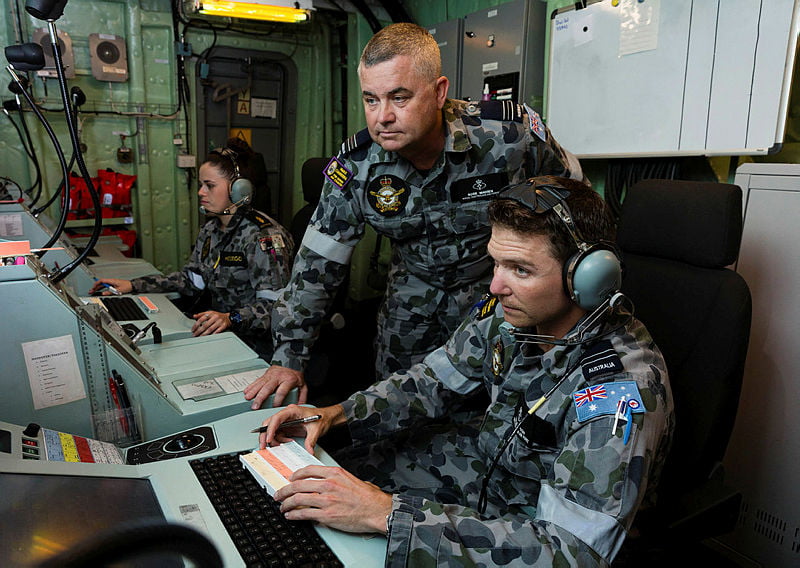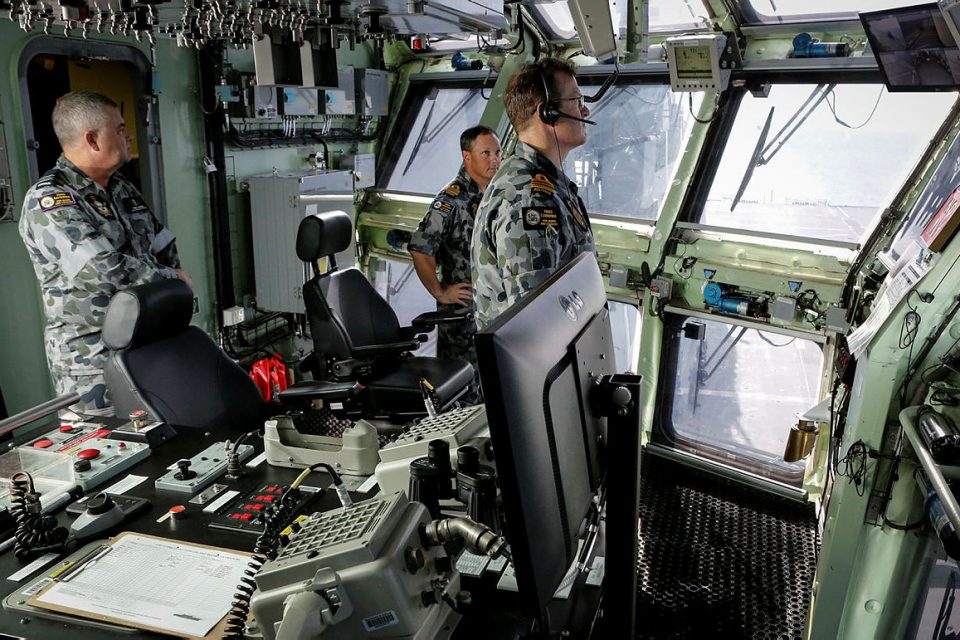During Bold Alligator 2013, we interviewed an ADF officer about the coming of a new amphibious capability to the ADF.
Second Line of Defense learned more about the Aussie transition with an opportunity to discuss the effort with an Aussie Army officer involved in Bold Alligator 2013. LtCol Bonavita is currently the Australian Army liaison officer with the USMC and is based at Quantico. He is finishing the final year of his three-year tour of duty in the United States. He participated last year in Bold Alligator 2012 with two other Aussie officers and in this year’s exercise with one other officer.
Throughout his interview, he emphasized that the Aussies have been preparing for the introduction of their new ships, in part by working with the USMC. LtCol Bonavita said “as far as we [Australia] are concerned, the Marines are the experts on amphibious operations.” Australia will look to share much information with the USMC as its Amphibious capability emerges. This is already occurring with a program of personnel exchanges and combined training.
LtCol Bonavita believes his posting to Quantico has been at the perfect time, because “as the Marines are returning to their amphibious roots, we are rediscovering ours with the introduction of our large amphibious vessels. Simultaneously, the Marines are establishing a presence in Darwin. These two issues have made for a busy assignment in the USA.”.
He also described how the working relationship with the USMC was an important part of the development of the Australian Army itself. “We have done a lot of work with the Marines, including our officers attending USMC courses like the Expeditionary Warfare School, through to participating in exercises like Tailsman Saber, RIMPAC and Expeditionary Warrior, and exchanges with 1st Marine Expeditionary Force (MEF) in San Diego.” The relationships have been enduring. LTCOL Bonavita remarked that “When I was a platoon commander, a USMC company joined our battalion in Townsville as its MEU was deployed. In my current role I have found myself working with some of the very same officers from that Marine Company who are now USMC Colonels. It’s been very positive!”
LtCol Bonavita suggested that continual work with the Marines would help shape the Australian thinking about the new ships and its approach to amphibious operations. “We have a USMC Colonel attached to the Australian Army’s Deployable Joint Force Headquarters within the 1st Division, which is one of the organizations leading our amphibious capability development.”
He also felt that his time at the two Bold Alligator exercises, which he attended, were important in shaping his own understanding of the evolving amphibious operational capabilities.
He was asked about what he thought about the Osprey and he commented that his only negative comment about the aircraft was the limited space inside, but felt it was perfect for amphibious operations.“I was surprised by the ability of the wings to fold on deck allowing a greater number of these aircraft to deploy aboard the ship. I was impressed with the redundancy of systems aboard the aircraft, which make it a very robust aircraft. I was also impressed by its speed and range as well as its ability to land just about everywhere. It really is a capable aircraft.”
He was asked about what he thought was the impact of the Marines exercising in the Northern Territory.
“The decision by the Australian government to invite the Marines to operate in the Northern Territory speaks volumes about the strength and good order of the relationship between Australia and the United States.”
That was 2019.
If you fast forward to 2019, the following article by Flight Lieutenant Bel Scott published by the ADF on May 23, 2019, highlights how far the ADF has come with its working of amphibiosity.
Three Royal Australian Air Force (RAAF) personnel are controlling the airspace from a moving airstrip on board HMAS Canberra.
Squadron Leader Ross Madsen and Flight Lieutenants Hamish Upton and Paul Atteridge are deployed on Canberra – one of Australia’s two landing helicopter docks (LHDs) – for three months during Indo-Pacific Endeavour 2019 (IPE19).
A senior air traffic controller (ATC), Squadron Leader Madsen said providing an air traffic control service at sea was largely similar to on land.
“The biggest difference is the airfield moves and the runway points in a different direction, so we are constantly dealing with different airspaces,” Squadron Leader Madsen said.
The ATCs work within the Air Division, a tri-service division that integrates Army and Air Force personnel into the Navy team.
“Working on Canberra is a great example of joint operations, with RAAF controllers working alongside Navy on a Navy ship controlling the airspace for Army aircraft,” Squadron Leader Madsen said.
As well as helping the Australian Defence Force, the deployment benefits other nations involved.
“During IPE19, we’ve been working with other nations to enhance interoperability with different helicopters landing on Canberra’s deck and our MRH90s landing on their ships,” Squadron Leader Madsen said.
“We’ve also embarked four Army Armed Reconnaissance Helicopters, from the Australian Army’s 1st Aviation Regiment in Darwin, to train aircrew and ground staff for deck landing qualifications by day and night.”
Lieutenant Commander Tony Hammond, the officer in charge of flying operations in Canberra, said the ATCs brought experience managing many aircraft to enable safe and efficient flying operations.
“Additionally, having established points of contact at land bases, which control associated restricted airspace, has proven beneficial to successful completion of short-notice tasking,” Lieutenant Commander Hammond said.
“Having a joint environment on IPE19 demonstrates how the ADF works collaboratively to achieve the required capability of LHDs.”
Squadron Leader Madsen is enjoying being posted to a Navy ship, an uncommon experience for a RAAF officer.
“Certainly 35 years ago when I joined Air Force, I never expected to find myself sailing through the Bay of Bengal next to a Kilo-class submarine operated by the Indian Navy,” he said





